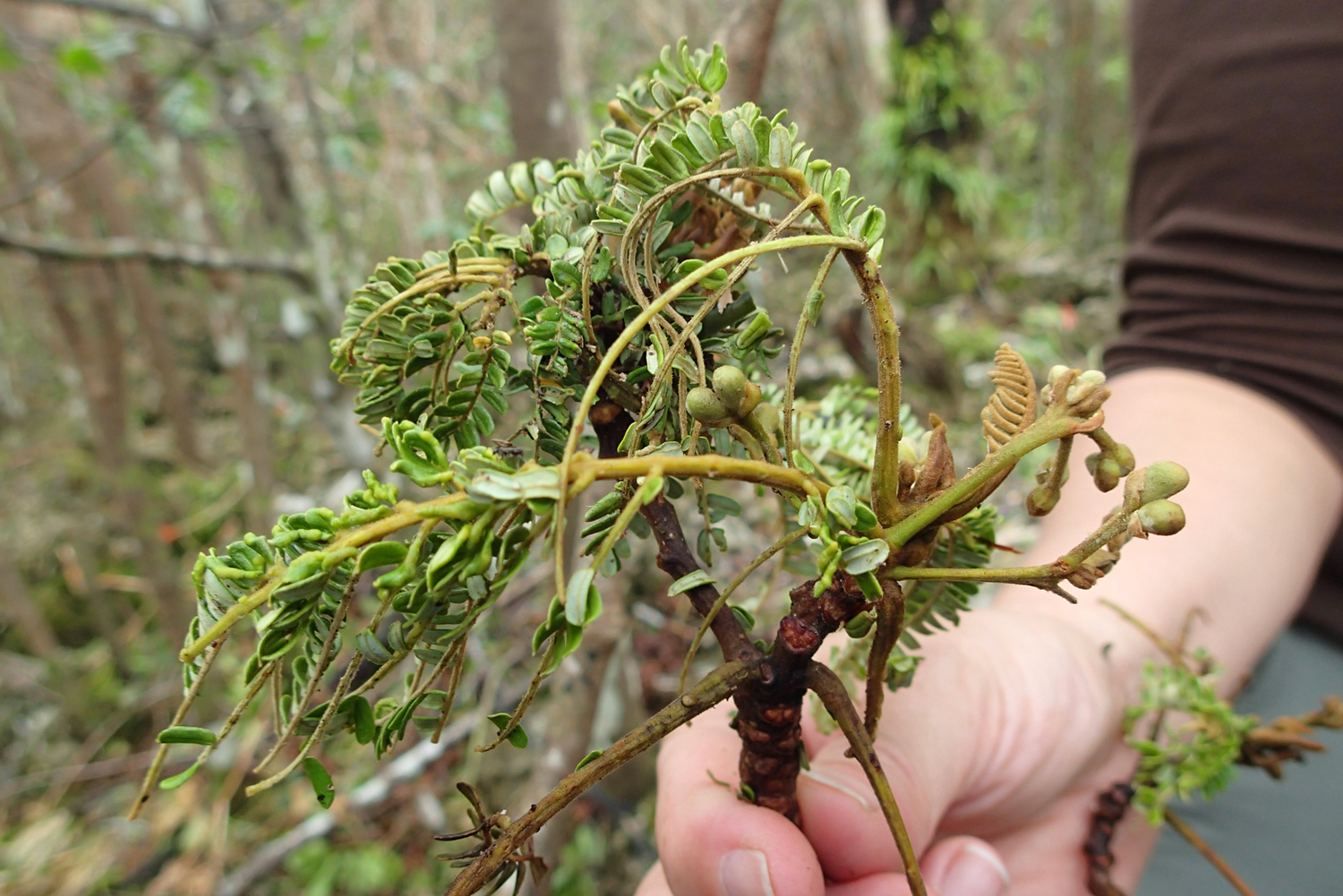Research Spotlight
Guam’s Most Endangered Tree Survives Typhoon Dolphin
Research Spotlight
2/7/2018

Broken branch buds from the håyun lågu tree.
Despite typhoon-strength winds, Guam’s most endangered tree weathered Typhoon Dolphin last month, leaving the only mature tree on island still standing after the storm passed.
Serianthes nelsonii, or håyun lågu in Chamorro, is endemic to the Marianas, meaning it is not only a native tree in the region but also is found exclusively on the islands of Guam and Rota. There are about 50 håyun lågu trees identified on Rota, but it is still undetermined if more thrive there. On Guam, there is only one left standing in Northwest Field on Andersen Air Force Base.
Håyun lågu is also the only plant species listed on the U.S. Fish and Wildlife Service’s endangered species list.
Else Demeulenaere, research associate and coordinator of the Guam Plant Extinction Prevention Program (GPEPP) at the University of Guam said the program’s ongoing efforts in coordination with Dana Lujan, Conservation Resources Chief with Andersen Air Force Base, the Wildlife refuge and US Fish & Wildlife, focus on collecting seeds to grow starter plants. They would then outplant the trees in their natural habitat of limestone forests.
During the storm, all of the branches of the sole håyun lågu fell off the tree, she said. From the flower buds that were on the branches, only two seeds were recovered for future research and repopulation.
“Every seed counts for this tree,” Demeulenaere said. “We were hoping it would have a good flowering season. Seeing the mother tree still standing tall in a typhoon damaged forest was a relief, but the sad part is that they had many flowers that would have most probably produced much needed seeds.”
Demeulenaere said there is a possibility the tree could produce more flowers after a traumatic event like Typhoon Dolphin, but for now all they can do is wait.
GPEPP, U.S. Fish and Wildlife Service's Guam National Wildlife Refuge, U.S. Fish Wildlife Service's Ecological Services Field Office, and Guam Department of Agriculture Forestry & Soil Resources Division recently outplanted 36 håyun lågu seedlings in the natural limestone habitat at the U.S. Fish and Wildlife Service's Guam National Wildlife Refuge at Ritidian which reported that none of the seedlings planted were damaged during the storm.
Through programs such as GPEPP, the University of Guam College of Natural and Applied Sciences continues to sustain and protect Guam’s agriculture and natural resources.
For more information about the Guam Plant Extinction Prevention Program please contact Else Demeulenaere or Jim McConnell at (671) 735-2129 or visit www.gpepp.org.
